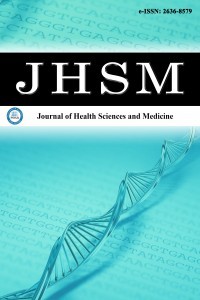1.
da Fonseca EB, Damião R, Moreira DA. Preterm birth prevention. Best Pract Res Clin Obstet Gynaecol. 2020;69,40-49. doi:10.1016/j.bpobgyn.2020.09.003
2.
Bayraktar B, Vural T, Gölbaşı C, Gölbaşı H, Bayraktar MG. Effect of co-twin fetal sex on fetal anthropometry and birth time in twin pregnancies. J Obstet Gynaecol Can. 2021;43(10):1153-1158. doi:10.1016/j.jogc.2021.02.113
3.
Aubin AM, McAuliffe L, Williams K, et al. Combined vaginal progesterone and cervical cerclage in the prevention of preterm birth: a systematic review and meta-analysis. Am J Obstet Gynecol MFM. 2023;5(8):101024. doi:10.1016/j.ajogmf.2023.101024
4.
ACOG Practice Bulletin No.142: Cerclage for the management of cervical insufficiency. Obstet Gynecol. 2014;123(2 Pt 1):372-379. doi:10.1097/01.AOG.0000443276.68274.cc
5.
Krispin E, Danieli-Gruber S, Hadar E, Gingold A, Wiznitzer A, Tenenbaum-Gavish K. Primary, secondary, and tertiary preventions of preterm birth with cervical cerclage. Arch Gynecol Obstet. 2019;300(2):305-312. doi:10.1007/s00404-019-05184-y
6.
Brown R, Gagnon R, Delisle MF. No. 373-cervical ınsufficiency and cervical cerclage. J Obstet Gynaecol Can. 2019;41(2):233-247. doi:10.1016/j.jogc.2018.08.009
7.
Golbasi C, Golbasi H, Bayraktar B, Sever B, Vural T, Ekin A. Effectiveness and perinatal outcomes of history-indicated, ultrasound-indicated and physical examination-indicated cerclage: a retrospective study. BMC Pregnancy Childbirth. 2022; 22(1):217. doi:10.1186/s12884-022-04557-7
8.
Lee SE, Romero R, Park CW, Jun JK, Yoon BH. The frequency and significance of intraamniotic inflammation in patients with cervical insufficiency. Am J Obstet Gynecol. 2008;198(6):633.e1-633.e6338. doi:10.1016/j.ajog.2007.11.047
9.
Hrubaru I, Motoc A, Moise ML, et al. The predictive role of maternal biological markers and inflammatory scores NLR, PLR, MLR, SII, and SIRI for the risk of preterm delivery. J Clin Med. 2022;11(23):6982. doi:10.3390/jcm11236982
10.
Jung EY, Park KH, Lee SY, Ryu A, Joo JK, Park JW. Predicting outcomes of emergency cerclage in women with cervical insufficiency using inflammatory markers in maternal blood and amniotic fluid. Int J Gynaecol Obstet. 2016;132(2):165-169. doi:10.1016/j.ijgo.2015.07.011
11.
Lin Y, Fang J, Ni R, et al. Dynamic change of novel systemic ınflammation markers to predict maternal-neonatal prognosis after cervical cerclage. J Inflamm Res. 2023;16:1745-1756. doi:10. 2147/JIR.S410211
12.
Gabay C, Kushner I. Acute-phase proteins and other systemic responses to inflammation. N Engl J Med. 1999;340(6):448-454. doi:10.1056/NEJM199902113400607
13.
Fang J, Lin Y, Chen Z, Lin Y, Pan M. The association of inflammatory markers with maternal-neonatal outcome after cervical cerclage. J Inflamm Res. 2023;16:245-255. doi:10.2147/JIR.S393666
14.
Casadei Gardini A, Scarpi E, Valgiusti M, et al. Prognostic role of a new index (multi inflammatory index) in patients with metastatic colorectal cancer: results from the randomized ITACa trial. Ther Adv Med Oncol. 2020;12:1758835920958363. doi:10.1177/1758835920958363
15.
Gozdas HT, Kayis SA, Damarsoy T, et al. Multi-inflammatory index as a novel mortality predictor in critically Ill COVID-19 patients. J Intensive Care Med. 2022;37(11):1480-1485. doi:10. 1177/08850666221100411
16.
Jin C, Li X, Luo Y, Zhang C, Zuo D. Associations between pan-immune-inflammation value and abdominal aortic calcification: a cross-sectional study. Front Immunol. 2024;15:1370516. doi:10. 3389/fimmu.2024.1370516
17.
Berghella V. Universal cervical length screening for prediction and prevention of preterm birth. Obstet Gynecol Surv. 2012; 67(10):653-658. doi:10.1097/OGX.0b013e318270d5b2
18.
Crane JMG, Hutchens D. Use of transvaginal ultrasonography to predict preterm birth in women with a history of preterm birth. Ultrasound Obstet Gynecol. 2008;32(5):640-645. doi:10.1002/uog.6143
19.
Liu Y, Ke Z, Liao W, et al. Pregnancy outcomes and superiorities of prophylactic cervical cerclage and therapeutic cervical cerclage in cervical insufficiency pregnant women. Arch Gynecol Obstet. 2018;297(6):1503-1508. doi:10.1007/s00404-018-4766-9
20.
Incerti M, Ghidini A, Locatelli A, Poggi SH, Pezzullo JC. Cervical length ≤25 mm in low-risk women: a case control study of cerclage with rest vs rest alone. Am J Obstet Gynecol. 2007; 197(3):315.e1-315.e4. doi:10.1016/j.ajog.2007.06.029
21.
Aguin E, Aguin T, Cordoba M, et al. Amniotic fluid inflammation with negative culture and outcome after cervical cerclage. J Matern Fetal Neonatal Med. 2012;25(10):1990-1994. doi:10.3109/14767058.2012.667177
22.
Goldenberg RL, Culhane JF, Iams JD, Romero R. Epidemiology and causes of preterm birth. Lancet Lond Engl. 2008;371(9606):75-84. doi:10.1016/S0140-6736(08)60074-4
23.
Chan LLK, Leung TW, Lo TK, Lau WL, Leung WC. Indications for and pregnancy outcomes of cervical cerclage: 11-year comparison of patients undergoing history-indicated, ultrasound-indicated, or rescue cerclage. Hong Kong Med J. 2015;21(4):310-317. doi:10.12809/hkmj144393
24.
Khan MJ, Ali G, Al Tajir G, Sulieman H. Evaluation of outcomes associated with placement of elective, urgent, and emergency cerclage. J Obstet Gynecol India. 2012;62(6):660-664. doi:10.1007/s13224-012-0233-x
25.
Giraldo-Isaza MA, Berghella V. Cervical cerclage and preterm PROM. Clin Obstet Gynecol. 2011;54(2):313-320. doi:10.1097/GRF.0b013e318217d530

